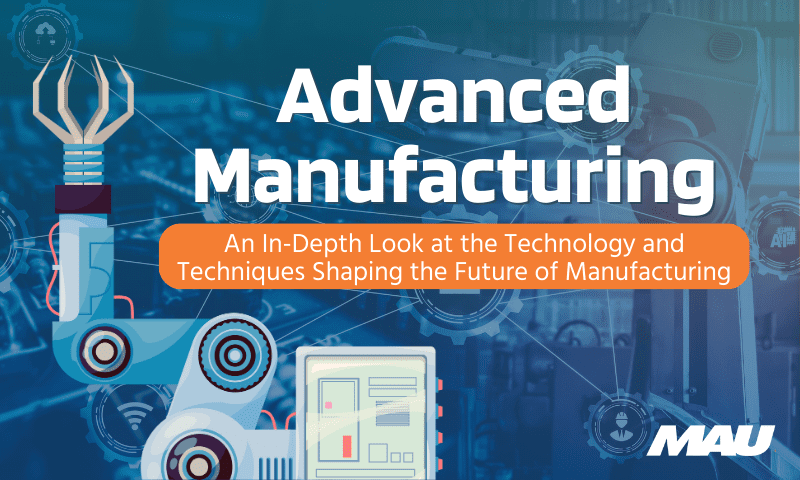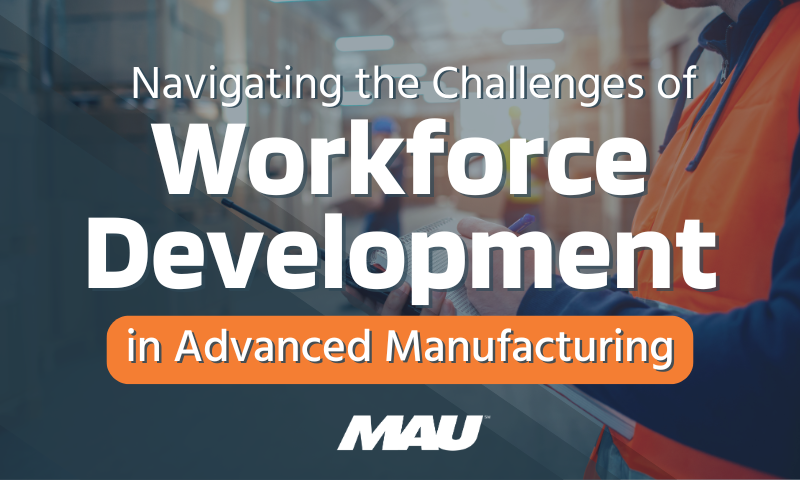Advanced manufacturing: perhaps you have heard this term before, but do you really know what it means? Advanced manufacturing is a rapidly evolving field that has transformed traditional manufacturing processes into highly efficient and intelligent systems. It combines cutting-edge technology with innovative techniques to produce complex products at a faster rate, higher quality, and lower cost than ever before.
From the use of robotics and 3D printing to the implementation of artificial intelligence and the Internet of Things, advanced manufacturing is transforming the way goods are created and delivered. This approach allows businesses to remain competitive in a constantly evolving landscape, resulting in increased productivity, greater savings, and a superior customer experience. It’s clear that advanced manufacturing is the wave of the future, and those who adopt this approach will be well-positioned for success.
This method of production encompasses multiple industries, such as aerospace, automotive, electronics, and more. In this detailed blog post, we will take an in-depth look at advanced manufacturing – what it is, how it works, its benefits and challenges, and its impact on our society. So buckle up and get ready to dive into the fascinating world of advanced manufacturing!
Key Components of Advanced Manufacturing
As the manufacturing industry has evolved over the years, the adoption of advanced technologies has been a key driver. These technologies have transformed the sector, leading to improved productivity, quality, and efficiency. For any company wishing to operate competitively in this ever-changing landscape, understanding the key components of advanced manufacturing is critical.
These include a strong focus on automation, data analytics, 3D printing, and the use of advanced materials. Advanced manufacturing systems are also characterized by the use of cutting-edge sensors and actuators, advanced robotics, and the implementation of sophisticated human-machine interfaces. With these components in place, companies can realize the full benefits of advanced manufacturing, positioning themselves ahead of the competition.
Automation and robotics
Automation and robotics have transformed the way we live, work, and interact with the world. These innovative technologies have enabled us to automate processes in manufacturing plants, warehouses, and even in our homes. From self-driving cars that use sensors and algorithms to navigate the roads to robots that can perform complex surgeries with precision, automation and robotics offer unprecedented efficiency, productivity, and safety.
Data analytics and artificial intelligence
Data analytics and artificial intelligence are two powerful tools used by businesses to make more informed decisions. Data analytics involves the use of statistical algorithms and computation to uncover insights and trends from large datasets, while AI utilizes advanced machine learning algorithms to make predictions and automate decision-making processes.
Together, data analytics and AI provide a comprehensive solution for businesses to optimize operations, improve customer experience, and drive growth. With the ability to process vast amounts of data quickly and accurately, these technologies provide businesses with a competitive advantage and help them stay ahead of the curve. As the field of data analytics and AI continues to evolve, it is important for businesses to stay up-to-date with the latest advancements and apply them to their operations to achieve their goals.
Benefits of Implementing Advanced Manufacturing Techniques
Companies that have implemented advanced manufacturing techniques have experienced improvements in production quality, cost, and lead time. Advanced manufacturing techniques allow for customization and flexibility, making it easier to meet the varying needs of customers. Moreover, they allow companies to streamline operations, eliminate waste, and reduce production time.
The use of advanced manufacturing techniques also allows companies to stay ahead of the competition and be more competitive in the global market. By integrating advanced manufacturing techniques into production strategies, companies can enhance productivity, reduce costs, improve efficiency and enhance customer satisfaction. Therefore, investing in advanced manufacturing techniques is essential for businesses that want to stay ahead of industry trends and ensure long-term success.
Challenges and Barriers to Adopting Advanced Manufacturing
Innovative technologies such as 3D printing, robotics, and automation have revolutionized the manufacturing industry. However, as with any change, there are obstacles to overcome. The adoption of advanced manufacturing techniques can be a daunting task for companies. Challenges such as cost, lack of skilled workers, and concerns surrounding data security can hinder progress.
Additionally, manufacturers must adapt to new processes, implement new equipment, and retrain employees, which can be time-consuming and costly. While these challenges may seem daunting, overcoming them will provide significant benefits such as increased efficiency, productivity, and, ultimately, a competitive edge in the global marketplace.
Advanced manufacturing has undoubtedly had a profound impact on the global economy. It has revolutionized how we produce and consume products, increasing efficiency, cost-effectiveness, and product quality. The rise of automation, artificial intelligence, and digitalization has accelerated the transition toward advanced manufacturing and has further enhanced its impact on the global economy.
Companies that invest in advanced manufacturing technologies have a competitive advantage, enabling them to stay ahead of the curve and meet the evolving needs of their customers. As the manufacturing sector becomes increasingly advanced and sophisticated, it is expected to continue playing a crucial role in boosting economic growth and creating job opportunities.





